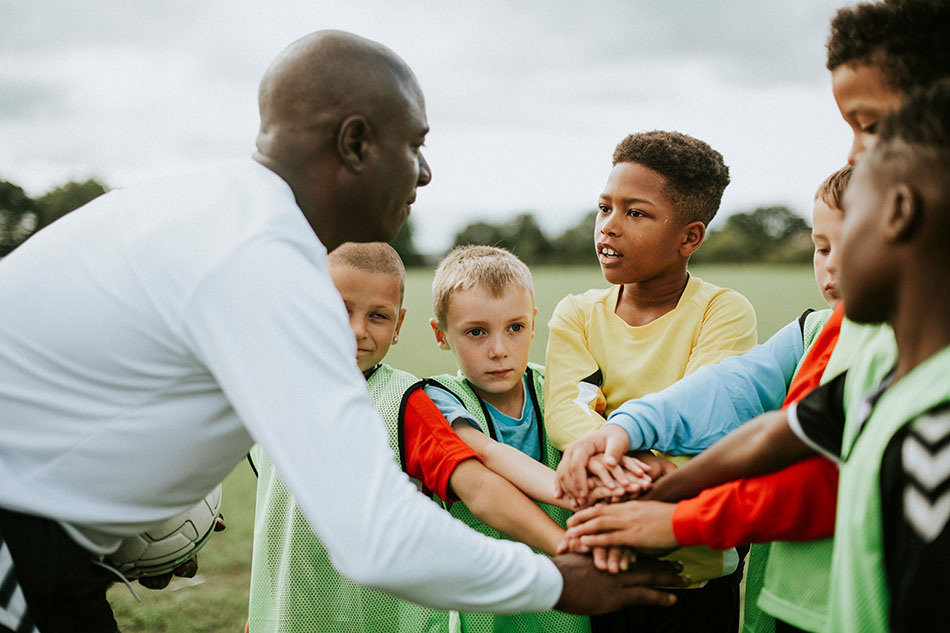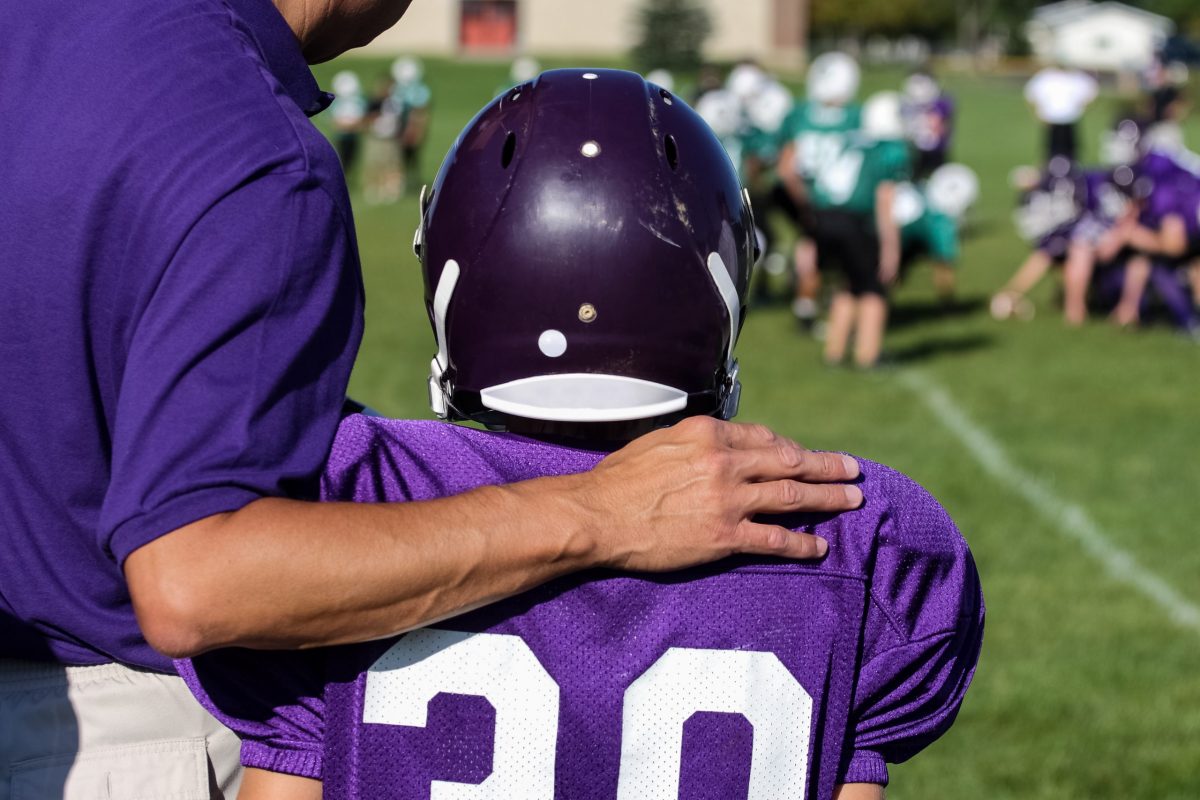
It seems there are nearly as many types of sports injuries as there are young athletes who need treatment for them. Upwards of 2.6 million children between the ages of 0-19 end up in the emergency department (ED) for recreation- and sports-related injuries each year. From Shoulder and Knee injures to ankle sprains and stress fractures, injuries are widespread among young athletes in all sports.
So why are there so many youth sports injuries?
Because children are still growing, they have a higher risk of injury than adults do. Additionally, while bones, muscles, tendons, and ligaments develop, so do coordination, strength, and stamina. Together, these variables increase the opportunity for injury among young athletes.
At EmergeOrtho—Triangle Region, we have an entire team of board-certified, fellowship-trained Sports Medicine physicians ready to treat your child’s injuries. These experienced, highly-skilled orthopedic experts work with other subspecialty doctors—Hip and Knee; Elbow and Arm; Hand and Wrist; Shoulder; Foot and Ankle; and Back, Neck, and Spine—to specifically address youth sports-related injuries.
Continue reading to learn more about the most common types of youth sports injuries, treatment options—and equally important—how to prevent them.
Top Sports-Related Injuries Affecting Young Athletes
 Typically, sports-related injuries among children are either acute or the result of overuse. Acute sports injuries occur suddenly, such as an unusual twist, a fall, or a collision. Overuse injuries happen over time and typically involve repetitive motion.
Typically, sports-related injuries among children are either acute or the result of overuse. Acute sports injuries occur suddenly, such as an unusual twist, a fall, or a collision. Overuse injuries happen over time and typically involve repetitive motion.
Acute injury examples include:
- Broken bones
- Sprains
- Strains
- Ligament injuries
- Cuts and bruises
Overuse injury examples include:
- Throwing injuries
- Achilles tendinitis
- Shin splints
One of the main concerns of youth sports injuries is how they impact a child’s growth plates. These cartilage “plates” are located at the end of each long bone in the body and harden into bones as the child grows. However, because they are weaker than nearby tendons and ligaments, growth plates are more susceptible to injury. Growth plate injuries, depending on their severity—such as a fracture—can potentially disrupt the normal growth of the bone.
Other common sports injuries in young people include:
1. Medial Collateral Ligament (MCL) Injury
Since the MCL is located on the inner portion of the knee, most injuries result from a blow to the knee during sports like soccer, football, and basketball. MCL tears and sprains are some of the most common MCL injuries.
Treatment: Most MCL injuries respond well to the RICE Method, bracing, physical therapy, non-steroidal anti-inflammatory medication (NSAIDs), and assistive devices (such as crutches). Severe injuries may require surgery.
2. Anterior Cruciate Ligament (ACL) Injury
The ACL is located in the middle of the knee and helps keep the shinbone from moving out in front of the thigh bone. Young female athletes are more susceptible to ACL injuries, with most occurrences in girls’ soccer. Football, girls’ basketball, girls’ gymnastics, and boys’ and girls’ lacrosse rank as some of the highest ACL injury risk sports for high school-aged children.
Treatment: Activity modification, physical therapy, bracing are often effective in addressing ACL injuries.Severe injuries and those that do not respond well to conservative treatment methods may require surgery.
3. Ankle Sprains
Ankle sprains are the most common injury in all youth sports. They occur as the result of a young athlete “rolling” or “turning” the ankle. As a frequent injury among young athletes, ankle sprains can be dangerous because they resemble non-displaced growth plate fractures of the fibula, or lower leg bone.
Treatment: Most sprained ankles respond positively to nonsurgical approaches such as short-term rest from sports, immobilization, bracing, and physical therapy.
4. Meniscal Injury
Most meniscal injuries are a result of an unexpected twisting motion. This results in the crescent-shaped cartilage (meniscus) located between the femur (thigh bone) and tibia (lower leg bone) “catching,” or “locking.”
Symptoms often include swelling, stiffness, and pain. Male athletes who play football and soccer are most susceptible to this type of injury. And, girls who play soccer and volleyball are at higher risk of meniscal injury. Both girls’ and boys’ basketball can also cause meniscal problems.
Treatment: While minor meniscus tears may heal with conservative approaches, most meniscal injuries require arthroscopic surgery to repair.
5. Shoulder Dislocation
The shoulder is the most commonly dislocated joint in the body, especially among young athletes playing contact sports or sports where falls are likely, such as gymnastics and hockey. Despite being the body’s most mobile joint, a hard hit can cause the upper part of the humerus (arm bone) to pop out of the socket in the joint. This causes pain, swelling, shoulder instability, and in extreme cases, tear or damage tendons, ligaments, and nerves.
Treatment: In most cases, shoulder locations are managed by restoring the arm bone to its proper position, which immediately stops the intense pain. Rest, and immobilizing the shoulder for 3-4 weeks to allow time for healing is the typical treatment plan. Outpatient physical therapy to restore strength and range of motion starts when the swelling and pain subside. Only when the ligaments or tendons are stretched or torn, or when the bone is damaged, is surgery necessary.
6. Fractures
The most common type of youth sports fracture is a “stress fracture.” Stress fractures are the byproduct of strain to the bone that causes a tiny break. While this injury can happen in any youth sport, it most commonly occurs among young athletes who participate in running and jumping sports such as track and field, basketball, and gymnastics.
Treatment: Most stress fractures respond best to rest and activity modification.
7. Medial Apophysitis
More commonly recognized as “Little Leaguer’s Elbow,” medial apophysitis is classified as an overuse injury resulting from excessive throwing.
Treatment: This condition typically resolves with rest, activity modification, and physical therapy.
Whether your young athlete experiences one of the injuries listed above or another, rest and a reprieve from sports participation are imperative for appropriate healing and recovery. Returning to a sport too soon can worsen an existing injury or invite additional injuries.
If you suspect your child has been hurt during a sporting activity, consulting with an orthopedic expert specifically trained and skilled in sports medicine helps ensure a proper diagnosis and treatment.
Whether it is knee injuries, broken ankles, wrist sprains, shoulder injuries, or other youth sports injuries, EmergeOrtho—Triangle Region Sports Medicine doctors specialize in patient-centered, personalized treatment.
Preventing Acute and Overuse Injuries in Youth Sports
There are several things your young athlete can do to prevent a sports-related acute or overuse injury, which include:
- Wearing protective gear (helmets, shin guards, mouthguards, etc.)
- Ensuring that protective equipment is the right size and used properly
- Warming up before practice and games
- Consulting with a physician to make sure the athlete’s physical condition is ready to play
- Staying hydrated
- Avoiding playing if injured, in pain, or exhausted
- Limiting the number of sports teams and participation during a season
- Abstaining from playing a single sport year-round
- Taking appropriate breaks between sports seasons
To see firsthand how EmergeOrtho—Triangle Region physicians help patients prevent sports injuries, take a look at these informative videos:
- Sports Injury Prevention Tips (Dr. Mark Burt)
- Injury Prevention: How Athletes Can Protect Their Knees (Dr. Karl Bowman)
For more information on youth sports injuries, treatment, and prevention, self-schedule an appointment with one of our highly qualified EmergeOrtho—Triangle Region doctors. Or, call us any time at (919) 220-5255.








